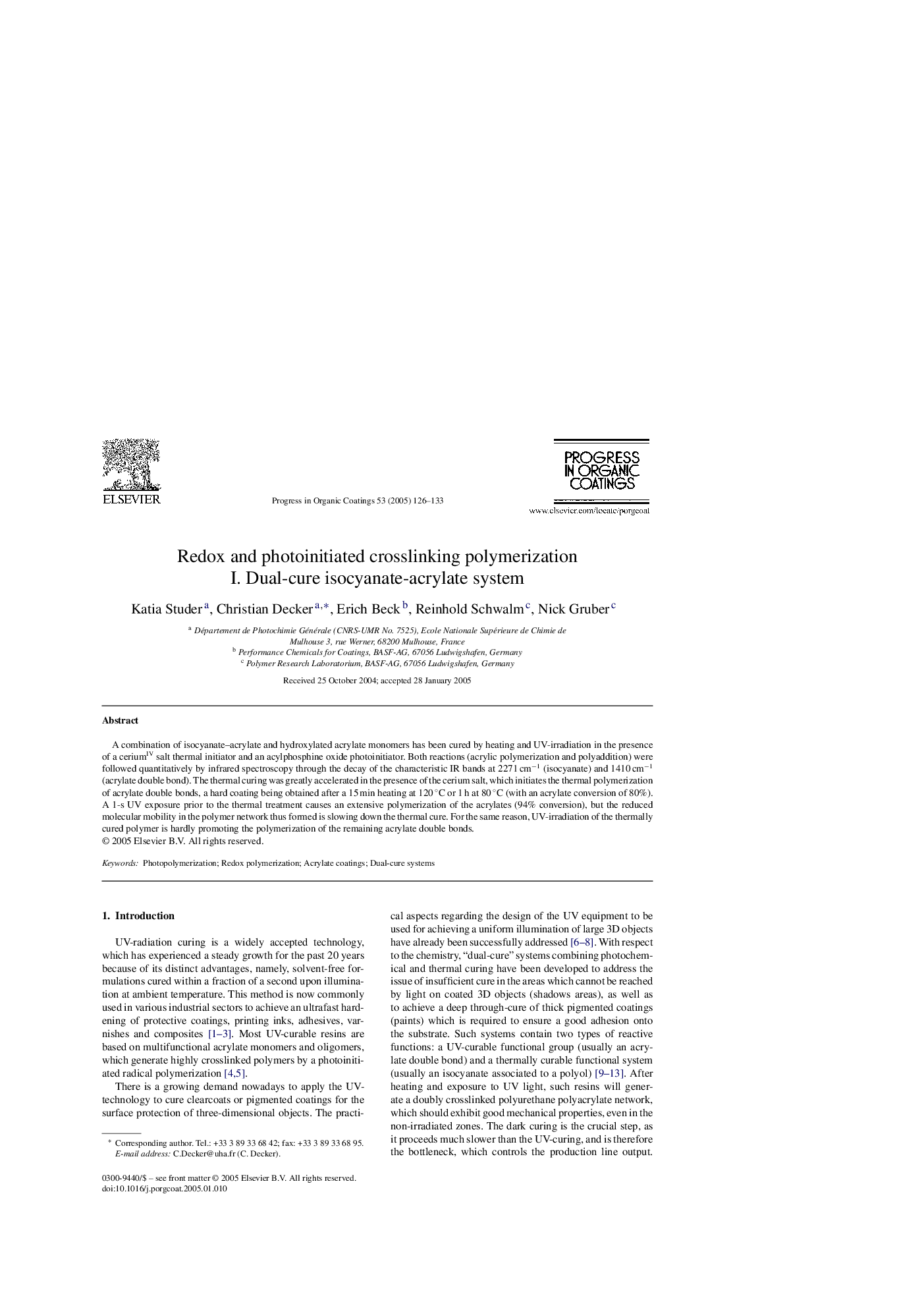| Article ID | Journal | Published Year | Pages | File Type |
|---|---|---|---|---|
| 10398162 | Progress in Organic Coatings | 2005 | 8 Pages |
Abstract
A combination of isocyanate-acrylate and hydroxylated acrylate monomers has been cured by heating and UV-irradiation in the presence of a ceriumIV salt thermal initiator and an acylphosphine oxide photoinitiator. Both reactions (acrylic polymerization and polyaddition) were followed quantitatively by infrared spectroscopy through the decay of the characteristic IR bands at 2271 cmâ1 (isocyanate) and 1410 cmâ1 (acrylate double bond). The thermal curing was greatly accelerated in the presence of the cerium salt, which initiates the thermal polymerization of acrylate double bonds, a hard coating being obtained after a 15 min heating at 120 °C or 1 h at 80 °C (with an acrylate conversion of 80%). A 1-s UV exposure prior to the thermal treatment causes an extensive polymerization of the acrylates (94% conversion), but the reduced molecular mobility in the polymer network thus formed is slowing down the thermal cure. For the same reason, UV-irradiation of the thermally cured polymer is hardly promoting the polymerization of the remaining acrylate double bonds.
Related Topics
Physical Sciences and Engineering
Chemical Engineering
Process Chemistry and Technology
Authors
Katia Studer, Christian Decker, Erich Beck, Reinhold Schwalm, Nick Gruber,
